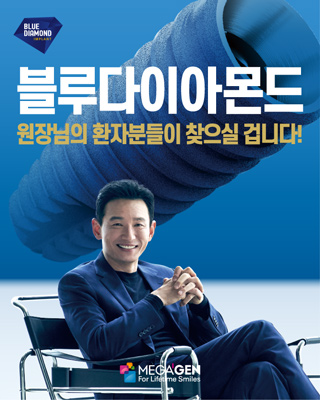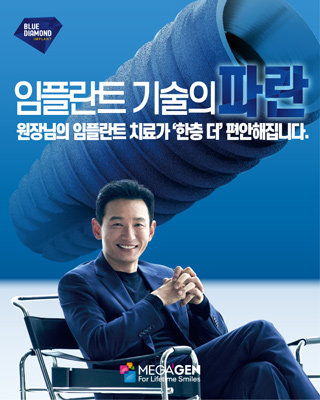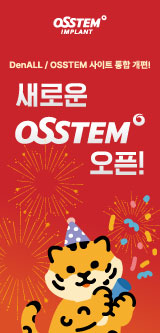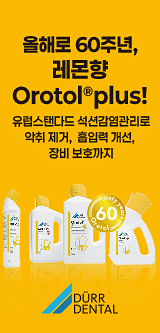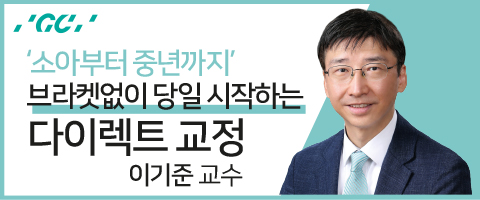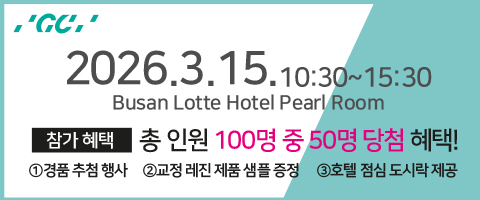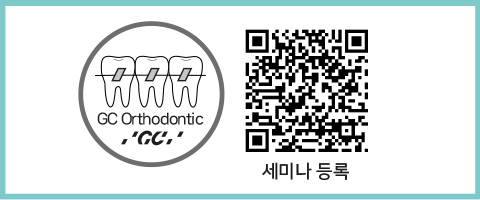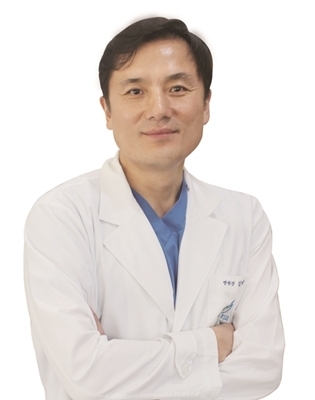
김혜성 이사장(서울치대 졸업, 동대학원 박사)
사과나무의료재단의 이사장이자, 재단 산하 의생명연구소의 미생물 연구자이다.
구강미생물에서 시작해 장내 미생물, 발효 음식의 미생물까지 폭넓게 공부하며 몇 권의 책을 냈고 논문을 발표했다.
『미생물과의 공존』 『입속에서 시작하는 미생물이야기』 『미생물과 공존하는 나는 통생명체다』등 3권이 과학기술부 선정 우수과학도서를 수상했다.
얼마 전 이발을 하러 미장원에 갔는데, 헤어 디자이너가 “고객님, 스케일링을 한번 받아보시죠.”하더라고요. 머리카락이 가늘어지고, 계속 빠지는 것이 보였나 봅니다. 그러면서, 그분 말씀이 “치과에서 스케일링하듯이, 두피도 스케일링을 하면 도움이 됩니다” 했습니다. 스케일링이란 말이 이젠 참 일반화되었구나 싶었습니다.
스케일링은 다 아시는 대로, 치아에 붙어있는 치석을 제거하는 치과 술식입니다. 치석이 많을수록, 그곳을 표면 삼아 세균들이 붙고 바이오필름이 증식하기 때문에, 그것을 제거해 줌으로써, 구강 내 세균부담을 줄이려는 술식이지요. 일반인에게까지 익숙한 이 술식은 2차 대전 후 스칸디나비아 반도부터 시작되었다고 합니다.
지금은 구강건강에서도 최 선진국격인 스웨덴을 비롯한 스칸디나비아의 여러 복지국가들도 실은 2차 대전 직후만 해도 국민들의 구강상태는 상당히 안 좋은 편이었습니다. 1940년대만 해도, 스웨덴 젊은이들 중 이를 제대로 가지고 있던 사람은 드물었다고 합니다. 심지어 6500명의 젊은 군인들 중 18명만 자기 이를 모두 가지고 있었다고 하니까요(Jacobson and Theilade 1998) 그러다 제이콥슨(Lars Jacobson) 같은 학자들이 나서, 2차대전에서 돌아온 퇴역군인들을 상대로 스케일링을 비롯한 여러 잇몸치료를 강화했습니다. 몇년 후 결과는 놀라웠습니다. 구강위생상태가 좋아지며, 훨씬 많은 사람들이 자기 치아를 갖고 밥을 먹게 되고, 건강해진 것입니다.
지금도 치주학(Periodontology)에서는 스칸디나비아 반도의 학자들이 많이 앞서고 좋은 논문들이 나오는 역사적 전통이 생긴 것이지요. 그렇게 스칸디나비아부터 시작한 스케일링은 곧 세계적으로 보편적인 구강위생술식으로 자리 잡았습니다. 우리나라의 경우 2015년 스케일링이 보험화된 이후 더욱 더 중요한 잇몸관리의 상식이 되어 버린 듯합니다.
그렇더라도 이 스케일링의 한계는 분명합니다. 무엇보다 치주 포켓이 깊은 경우, 스케일링은 설사 기구를 치주연하로 집어 넣는다 하더라도 blind technic이 됩니다. 이를 위해 치주조직을 열어서 보는 여러 수술기법도 개발되었지만, 이 역시 수술 후 트라우마가 있고, 술 후 관리가 안 되면 효과가 떨어지는 경우가 많습니다.
또 스케일링 후에 나타나는 후유증도 문제가 됩니다. 늘 진료실에서도 접하듯이 스케일링을 하면, 환자들은 시큰한 느낌이나 통증을 호소합니다. 이를 치과의사나 치과위생사는 두꺼운 치석을 제거하니, 치아가 옷을 벗은 듯이 예민해지는 것이고 시간이 지나면 원상회복된다고 대개는 얘기하지만, 실은 이 답은 오류일 수 있습니다.
한 연구에 의하면, 스케일링을 위한 전동기구나 수기구들이 일정한 힘으로 줄 때, 치질(백악질, Cementum) 역시 제거되기 때문입니다.(Ritz, Hefti et al. 1991) 그리고 그 제거되는 양이 생각보다 많아(100 micron 이상) 보통 치아뿌리를 감싸고 있는 백악질의 두께(10~60 micron)보다 더 많습니다. 말하자면, 스케일링으로 제거되는 것은, 비단 치석만이 아니라 정상적인 치질도 상당할 수 있다는 겁니다. 환자들이 느끼는 시큰함이나 통증 역시 당연한 것이고, 심지어 그것들이 비가역적일 수도 있다는 겁니다.
이런 스케일링의 후유증을 보완하기 위해 크게 두 가지를 생각해 볼 수 있습니다. 첫째, 최대한 부드러운 접근을 시간을 두고 하는 겁니다. 예를 들어 스케일링을 위해 기구를 치석이나 치질에 대기 전에 보다 부드러운 칫솔로 플라크를 제거해 보는 것을 생각해 볼 수 있습니다. 말하자면, 스케일링이라는 보다 직접적이고 강한 자극 전에 칫솔질로 그 위의 플라크를 제거하고 잇몸을 자극해 염증을 완화시켜 보는 겁니다.
전문가잇솔질(toothpick, 와타나베 칫솔질)이라고 알려진 이 방법은 실은, 스케일링의 후유증을 방어하기 위한 수단 정도가 아니라 매우 강력한 효과가 있습니다.
이런 전문가 칫솔질 만으로도, 6mm 이상의 치주포켓이 있는 사람들의 치주낭을 1.8mm 가량 감소시켰다는 보고가 있을 정도이니까요.(Page and Rams 2013) 이런 효과의 원인은 잠시만 생각해 보면 분명합니다. 치주질환이라는 질병을 일으키는 것은, 이미 경화된 치석이라기보다는, 거기를 표면 삼아 형성된 바이오필름(biofilm)일 테니까요. 전문가 칫솔질로 치은 연상이나 치은연하의 바이오필름을 제거해 주니, 당연히 잇몸의 염증이 호전될 수밖에 없겠지요.
또 하나의 방법은, 스케일링 이후에 손상된 치질의 복구를 시도해 보는 겁니다. 잘 알려진 불소도포이지요. 치질을 재강화해줌으로써, 충치예방에 효과가 큰 불소를 스케일링 후 예민해진 치질에 사용하여 시큰함과 통증을 완화시킵니다. 불소도포는 이런 치질의 재강화로 스케일링 후 후유증 감소뿐만 아니라, 노령인구에서 많이 나타날 수 있는 치근 우식증을 예방하고 항균효과도 있는 것으로 알려져 있지요.(Petersson 2013)
이런 이유로 저희 병원의 경우, 구강위생관리를 보다 포괄적으로 하고자, 보통 많이 하는 스케일링이나 치근활택술 외에도 이런 술식 전후에 전문가칫솔질과 불소도포를 함께 묶어 시행하고 있습니다. 물론 처음 내원 시, 환자에게 충분한 설명과 구강위생교육 역시 함께 하고 있고요. 이런 사전 모티베이션 인터뷰 후에 전문가 칫솔질을 포함한 여러 술식들을 함께 포괄적으로, 그러면서도, 좀 더 즐겁게 하자는 의미로, 저희는 스케일링이라는 이름을 조금 변형해 스케힐링(ScaHealing) 이란 이름으로 치과의사와 치과위생사들의 적극적인 참여를 기대하고 있습니다.
그런데, 난점이 있습니다. 위와 같은 구강위생교육, 전문가 칫솔질, 불소도포가 보험급여에 해당되지 않는다는 겁니다. 그래서, 저희 병원은, 불소도포에 일정한 비보험수가를 정하여 환자에게 청구하고 있습니다. 그럴 때, 환자들에게 마치 금전적 이유로 이런 술식을 하는 것으로 오해 받는 경우도 있어서, 가능한 이런 술식들도 보험화가 되고, 치과계에도 일반화되어, 환자들이 보다 포괄적인 구강위생관리 스케힐링을 받을 수 있기를 기대해 봅니다. 다음 기사처럼 말입니다.
http://www.dailydental.co.kr/news/article.html?no=111953
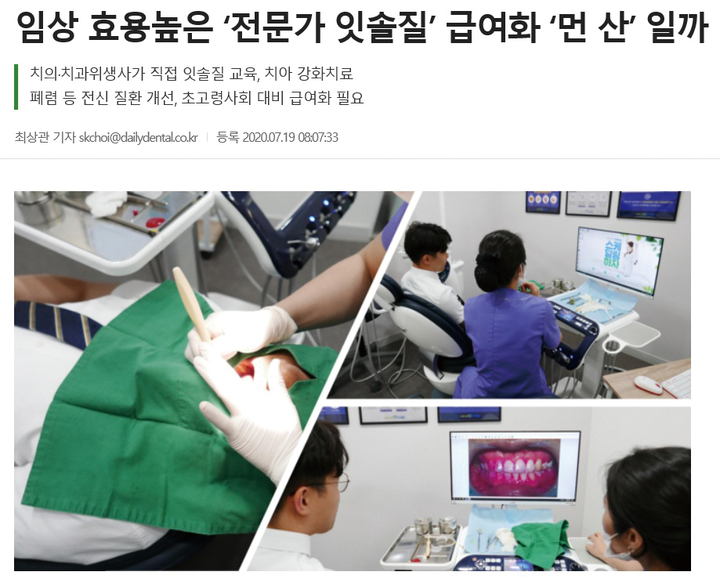
Jacobson, L. and J. Theilade (1998). The Scandinavian contribution to modern periodontology, Scandinavian Society of Periodontology.
Page, L. R. and T. E. Rams (2013). "Subgingival root brushing in deep human periodontal pockets." J Int Acad Periodontol 15(2): 55-63.
OBJECTIVE: The short-term clinical and microbiological effects of patient-applied subgingival root brushing were assessed on untreated deep human periodontal pockets. METHODS: Assessments of plaque, bleeding on probing, probing depth, total cultivable subgingival counts, and cultivable counts and proportions of six putative periodontal pathogens were carried out at baseline and after 14 days on two contralateral > or = 6 mm bleeding interproximal posterior sites in each of 11 adults with untreated chronic periodontitis. One of the sites was randomly assigned to daily patient-applied subgingival root brushing for 14 days, and the other to remain with the patient's pre-existing tooth brushing and flossing regimen. No other periodontal therapy was performed during the 14 test days. RESULTS: Significant reductions in plaque, bleeding on probing, probing depth, total subgingival counts, and levels of putative periodontal pathogens were found after 14 days of subgingival root brushing. Subgingival root brushing nearly eliminated bleeding on probing at test sites, reduced probing depths by a mean of 1.8 mm, and reduced cultivable subgingival proportions of six evaluated putative periodontal pathogens from a cumulative total of 14.1% to 0.8%. In comparison, no significant clinical or microbiological changes were detected after 14 days where the patient's pre-existing oral hygiene regimen remained unaltered. CONCLUSIONS: Subgingival root brushing over 14 days, in properly trained patients, induced favorable clinical and microbiological changes in deep periodontal pockets > or = 6 mm even in the absence of professional subgingival debridement.
Petersson, L. G. (2013). "The role of fluoride in the preventive management of dentin hypersensitivity and root caries." Clinical Oral Investigations 17 Suppl 1(Suppl 1): S63-S71.
OBJECTIVE: The objectives were to bring light on fluoride to control dentin hypersensitivity (DHS) and prevent root caries. MATERIALS AND METHODS: Search strategy included papers mainly published in PubMed, Medline from October 2000 to October 2011. RESULTS: Fluoride toothpaste shows a fair effect on sensitive teeth when combined with dentin fluid-obstructing agents such as different metal ions, potassium, and oxalates. Fluoride in solution, gel, and varnish give an instant and long-term relief of dentin and bleaching hypersensitivity. Combined with laser technology, a limited additional positive effect is achieved. Prevention of root caries is favored by toothpaste with 5,000 ppm F and by fluoride rinsing with 0.025-0.1 % F solutions, as the application of fluoride gel or fluoride varnish three to four times a year. Fluoride measures with tablets, chewing gum, toothpick, and flossing may be questioned because of unfavorable cost effectiveness ratio. CONCLUSION: Most fluoride preparations in combination with dentin fluid obstruction agents are beneficial to reduce DHS. Prevention of root caries is favorable with higher fluoride concentrations in, e.g., toothpaste. CLINICAL RELEVANCE: Fluoride is an effective agent to control DHS and to prevent root caries particularly when used in higher concentrations.
Ritz, L., et al. (1991). "An in vitro investigation on the loss of root substance in scaling with various instruments." J Clin Periodontol 18(9): 643-647.
There are differing opinions as to the extent to which root cementum has to be removed during root surface instrumentation over and above that of the debridement of plaque and calculus. Similarly, the amount of tooth material removed by individual instruments is also unclear, but a trend towards less damaging methods of root surface debridement has evolved in recent years. The purpose of this in vitro study was to determine the amounts of root substance removed by 4 different methods of instrumentation, hand curette, ultrasonic scaler, airscaler and fine grit diamond bur. Measurement of tooth substance loss was carried out with a specially constructed measuring device at 360 sites on 90 mandibular incisors following 12 working strokes with a clinically appropriate force of application. Only a thin layer of root substance (11.6 microns) was removed by the ultrasonic scaler, compared to the much greater losses sustained with the airscaler (93.5 microns), the curette (108.9 microns) and the diamond bur (118.7 microns).





